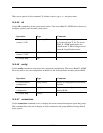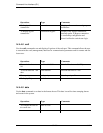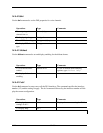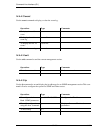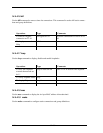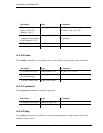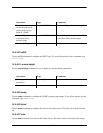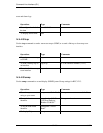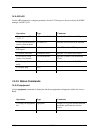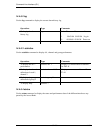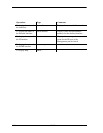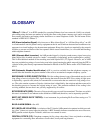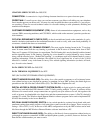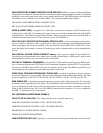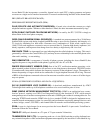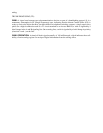DNIS (DIRECTORY NUMBER IDENTIFICATION SERVICE): DNIS is a feature of 800 and 900 lines
that provides the number of the caller dialed to reach the attached computer telephony system. Using DNIS
capabilities, one trunk group can be used to serve multiple applications. The DNIS number can be provided
in a number of ways, inband or out-of-band, ISDN or via a separate dedicated data channel.
DPO (DIAL PULSE ORIGINATION) CHANNEL UNIT
DPT (DIAL PULSE TERMINATING) CHANNEL UNIT
DROP & INSERT (D&I): As applied to T1, D&I refers to the process whereby one DS-0 channel is de-
multiplexed out of the DS-1 synchronous bit stream at one port of a digital channel back and another DS-0
inserted back in. The Windows-based Remote Monitor software program can be used to perform D&I on
individual channels between two T1 lines connected to the Access Bankô II.
DSU/CSU (DATA SERVICE UNIT/CHANNEL SERVICE UNIT): A device terminating a digital chan-
nel on a customer’s premises where it performs line coding, line conditioning and equalization functions
while responding to the receipt of loopback codes sent from the Central Office (CO) A DSU/CSU sits be-
tween the digital line coming in from the CO and devices such as channel banks or data communications
devices.
DSX (DIGITAL SYSTEM CROSS-CONNECT frame): A bay or panel to which T1 lines and DS1 cir-
cuit packs are wired that permits cross-connections by patch cords and plugs. A DSX panel is used in small
office applications where only a few digital trunks are installed.
DTE (DATA TERMINAL EQUIPMENT): In the EIA/TIA 232E standard specification, the RS232 inter-
face is connected between the DCE (Data Circuit-Terminating Equipment) and the DTE. The main differ-
ence between the DCE and the DTE is the pins two and three are reversed. The ABII uses an RS-232 port
for management and asynchronous and synchronous data transmission.
DTMF (DUAL TONE MULTIFREQUENCY SIGNALING): A method of signaling in which a combina-
tion of two frequencies out of a possible eight are used to transmit numerical address information. The eight
possible frequencies are 697 Hz, 770 Hz, 852 Hz, 941 Hz, 1209 Hz, 1336 Hz, 1477 Hz, and 1633 Hz.
E&M SIGNALING: A signaling arrangement that uses separate leads, called respectively the E lead and
the M lead, for the signaling and voice signals. The M lead (derived from ‘Mouth’) transmits ground or bat-
tery to the distant end of the circuit, while incoming signals are received as either a grounded or open con-
dition on the E (derived from ‘Ear’) lead. The E&M tie trunk interface functions as a de facto standard in
the PBX - T1 multiplexer Telco environment.
ESF (EXTENDED SUPERFRAME FORMAT):
FACILITY DATA LINK (FDL): The 4 Kbps channel used to transmit supervisory
FOREIGN EXCHANGE CHANNEL UNIT - OFFICE END (FX0)
FOREIGN EXCHANGE CHANNEL UNIT - STATION END (FXS)
FRAME RELAY ACCESS DEVICE (FRAD):
FXSDN (FXS SOFTWARE-DEFINED):
LINE INTERFACE UNIT (LIU): Typically, a controller device in a D-type channel bank, such as the CAC



